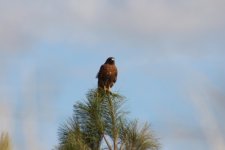
I am rapidly understanding as a newbie photographer that if I am taking a shot from a distance (20-50 meters)......and am at the 300-400mm zoom I need to use a tri pod or mono-pod. Right?
If I take it from a distance at 200mm or less I still almost need one for it is hard to use the AF button to pinpoint on the bird from a distance too...So essentially, a tripod or monopod is essential from any bird at a distance and with any zoom? Right...
Will a monopod do?
If I take it from a distance at 200mm or less I still almost need one for it is hard to use the AF button to pinpoint on the bird from a distance too...So essentially, a tripod or monopod is essential from any bird at a distance and with any zoom? Right...
Will a monopod do?




